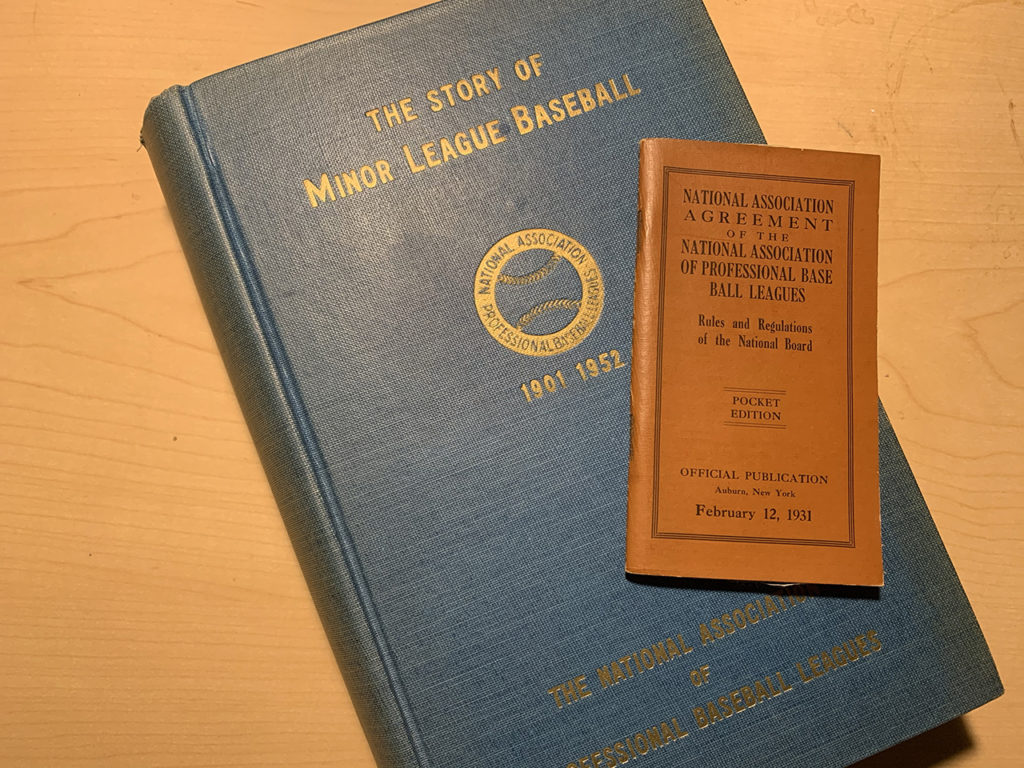Today marks the end of the last Professional Baseball Agreement between Major League Baseball and Minor League Baseball—and with MLB working on a dramatic makeover of MiLB, it’s the end of Minor League Baseball as we know it.
MLB’s master plan calls for the elimination of up to 42 teams, the reorganization of leagues and classifications, the elimination of a franchise system in favor of a new licensee system, affiliations chosen by MLB, more power for MLB teams to demand facility changes, and the elimination of the rookie and short-season leagues. (And probably a few other yet-to-be announced surprises.) Whether or not these changes are a good idea or not isn’t really relevant: MLB has all the power and is in the mode of dictating terms to Minor League teams. Some of the changes are designed to cut down on travel and elevate facilities—good—while most others are designed to centralize power across all of baseball with MLB—bad. The first step in the reorganization came with the announcement that the formerly Rookie-level Appalachian League will transition to a summer-collegiate league. And with the independent leagues signing on as MLB partners, say goodbye to renegade baseball.
It’s not a surprise that MLB let the PBA expire without a whimper: we know the game plan formulated months ago did not include any negotiation on a new or extended Professional Baseball Agreement with the National Association of Professional Baseball Leagues. Technically, the National Association still exists, but that won’t be for long.
And with the inevitable end of the National Association, so ends a uniquely American institution.
The current National Association was not the first amalgamation of Minor League teams; the previous one was disbanded by Major League Baseball when the American League directly challenged the supremacy of the National League. But this one was created in the wake of the American League proclaiming itself a major league. After the National League formally shut down the previous agreement between the majors and the minors, representatives from seven minor leagues met at Chicago’s Leland Hotel on Sept. 5, 1901 to form the National Association of Professional Baseball Leagues, launching play in the 1902 season. After battling some ill-fated challengers and surviving squabbles that would not be out of place now—like the insistence from upper-level leagues like the American Association that they receive more votes as to prevent a coalition of small-market teams to dictate unwanted changes—the National Association became the center of Minor League Baseball.
It was a system that served both MLB and MiLB well, providing stability in a sport that attracted more than its share of shifty operators. When MiLB felt the brunt of changing demographics and the rise of television in the 1950s, MLB rose to the challenge. When MLB sought local assistance during political challenges to its player pay structure, MiLB owners assisted.
But that system will be gone, and MiLB team owners will need to face the challenge of overwhelming uncertainty in coming months. If nothing else the National Association of Professional Baseball Leagues imposed stability on what was at times a rancorous collection of owners who were motivated more by self-interest than the good of the game. (Indeed, the first objective listed in the pocket National Association Agreement guide shown above: “To perpetuate baseball as the national game of America, and to surround it with such safeguards as to warrant absolute public confidence in its integrity and methods.”) This offseason, however, there’s no stability: teams can’t plan because they don’t have schedules, operating procedures, or even a full list of opponents.
There will be a lot of news about the next phase of minor-league baseball under MLB control. Some of it will be good; much of it will be bad. So brace yourselves for an offseason of change.
RELATED STORIES: MLB announces plans for Appalachian reincarnation as wood-bat league; American Association, Frontier League now MLB Partner Leagues; Indy Atlantic League designated MLB Partner League; O’Conner to retire as MiLB President and CEO; MiLB: We’re in the endgame now; Congress Takes Small Step to Limit Proposed Contraction of 40 MiLB Teams; Blumenthal to Introduce Senate Resolution Against MiLB Contraction; Behind the Player-Development Facilities Question in PBA Talks; MLB Raising MiLB Salaries for 2021; Fight to Save Lowell Spinners Goes National; MLB, MiLB Continue War of Words; More Meetings Scheduled; Congressional Resolution Introduced in Support of MiLB; Mayors Join Battle Against MLB’s MiLB Contraction Plan; MiLB Contraction Talks in Crucial Phase as 2020 Begins; Best of 2019, #1: MLB Proposes Contracting 42 MiLB Teams; MLB Doubles Down on Dream League, Facilities Argument; Sen. Blumenthal to MLB: Stop MiLB Contraction; Manfred: We Don’t Need No Stinkin’ Minor Leagues; Manfred Takes Aim at MiLB Owners, Says They Are Unwilling to Negotiate; Talks Over MiLB Contraction Continue; Don’t Expect Quick Resolution; The Last Great MiLB Contraction; Contraction Talks Continue Between MLB, MiLB–and Bernie Sanders; Sanders Slams MLB Over Contraction: Everything to Do With Greed; Addressing MLB’s Player-Development Concerns Without Contraction; Legislators, Elected Officials, Owners React to MiLB Contraction Plan; More Details Emerge on MLB’s Assault on Hometown Baseball; MLB/MiLB Negotiations: We’re at the Beginning, Not the End; Radical MiLB Realignment Proposed by MLB

